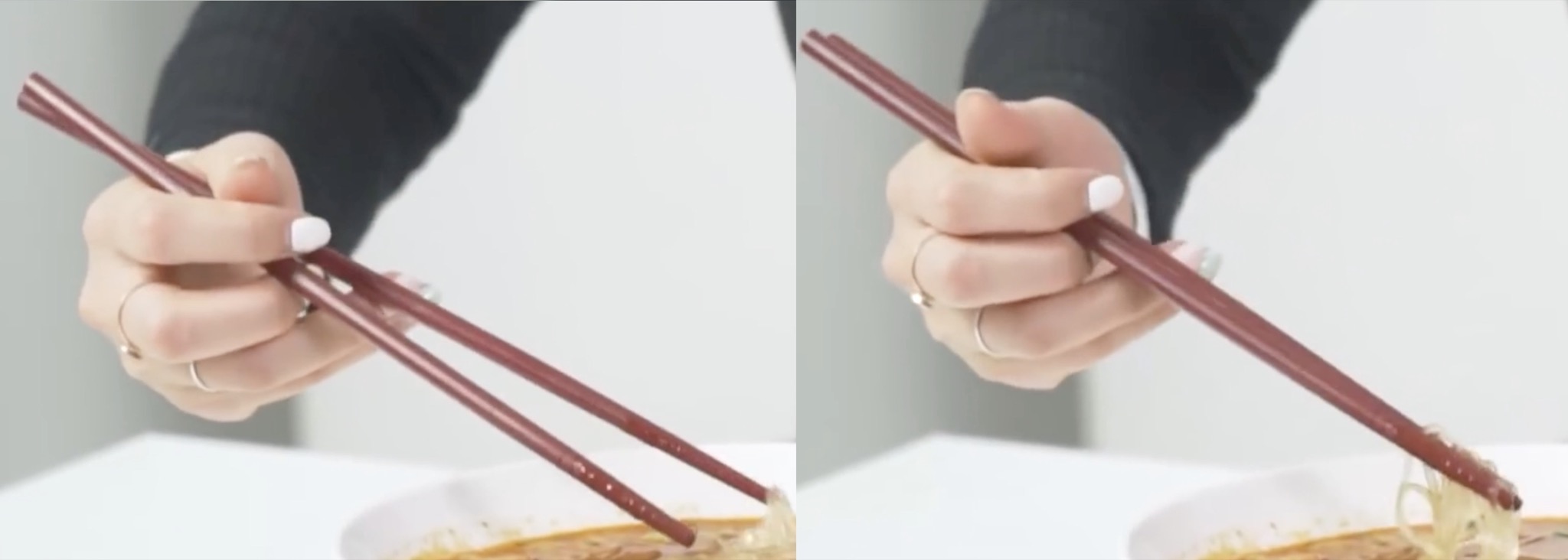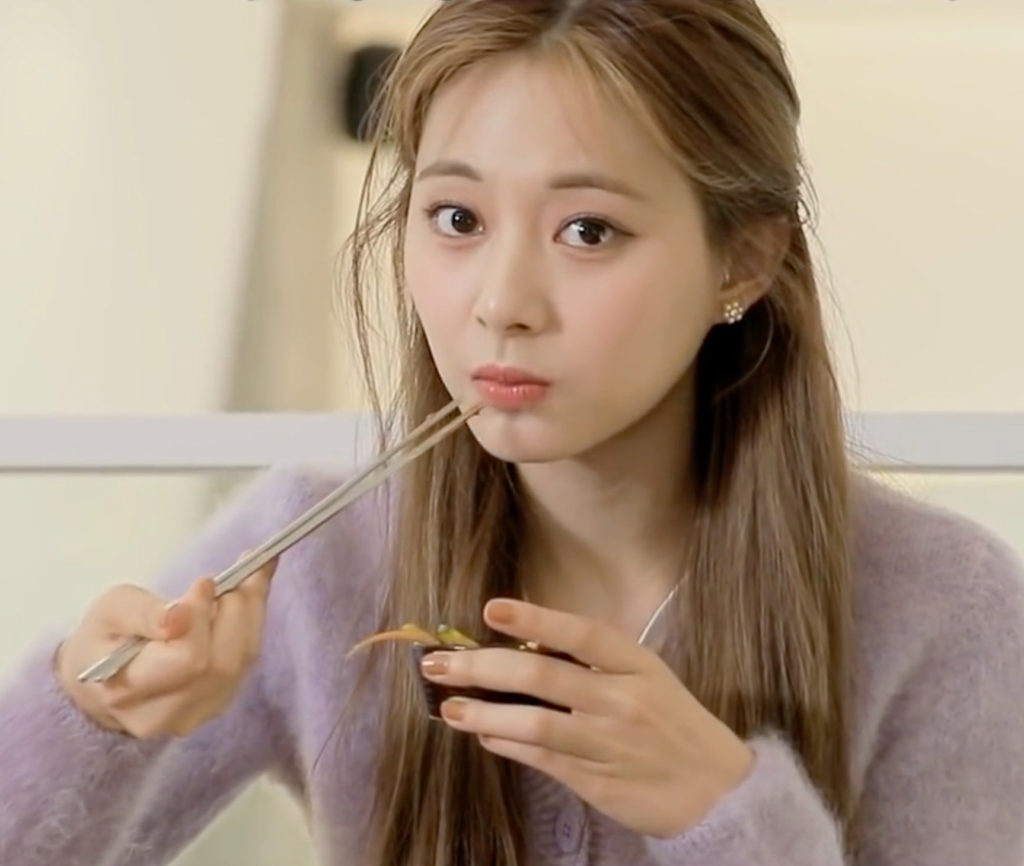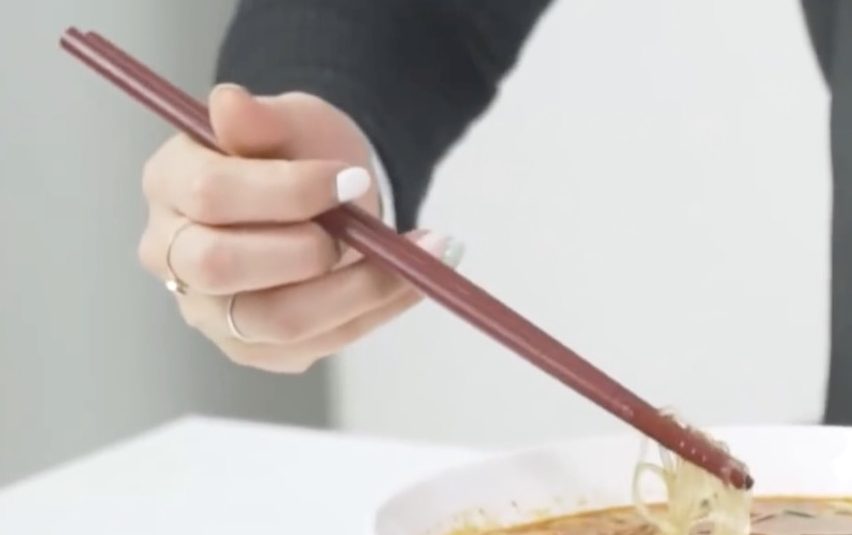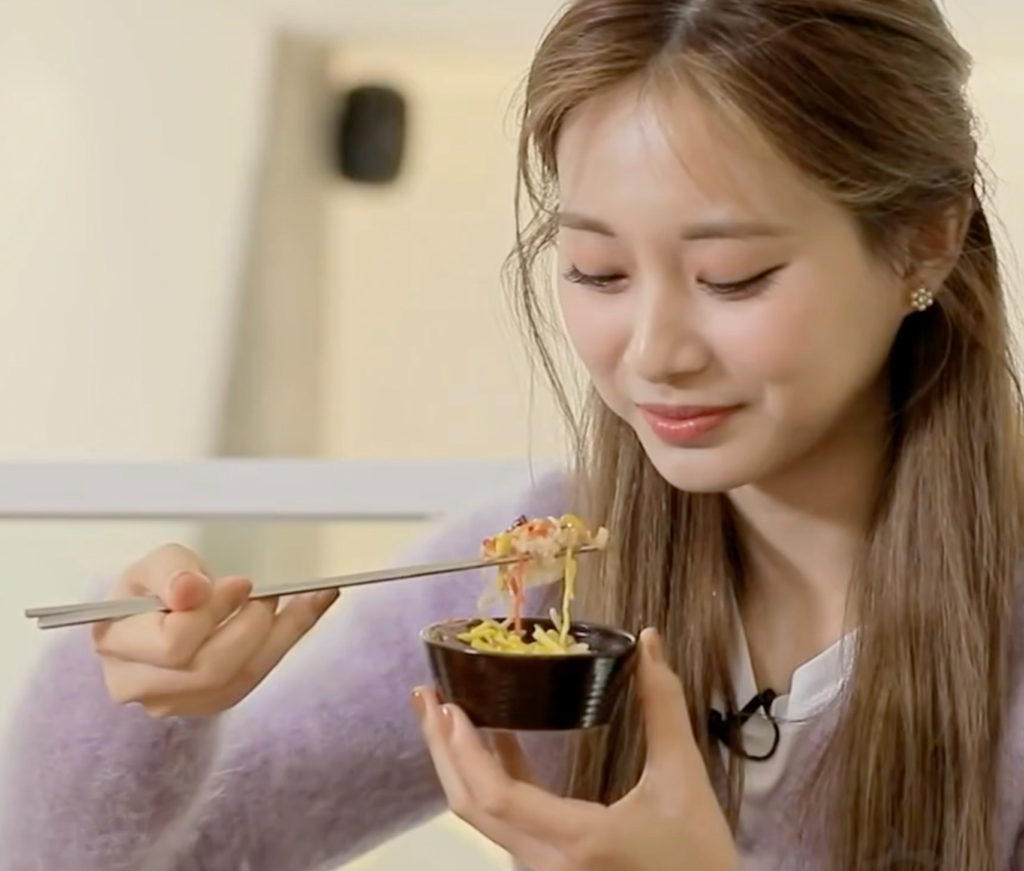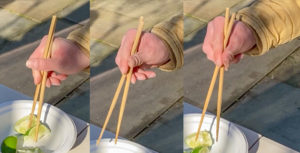Last Updated on August 25, 2021 by Staff
Double Hook is a chopstick grip halfway between Idling Thumb (for extension) and Chicken Claws (for compression).
Table of Contents
The name
In May 2021, we noted that Jane from the YouTube episode on chopsticking from WorldFriends used a variant in between Idling Thumb and Chicken Claws. We couldn’t quite pin down, at that time, Jane’s grip in the family tree of chopstick grips. We also did not know how to name it.
Jane extends chopsticks apart with Idling Thumb, but closes them against food items with Lateral compression. This hybrid approach is also seen in the Lateral Turncoat grip, where Turncoat extension is used in combination with Lateral compression. It is also similar to how Chicken Claws adopts a Lateral compression, and an Idling Thumb-like extension. Following images show the Closed posture (left) and the Open posture (right) from one part of the video.
In August 2021, we analyzed chopstick grips of all 9 members of TWICE. Once we analyzed Chaeyoung’s grips, we then had a name for both of these. We named Chaeyoung’s grip, the Hook n Clamp grip, because her index finger acts like a hook, and her middle finger works like a clamp. For Jane, both her index finger and her middle finger are used like a hook. So we named Jane’s grip the Double Hook grip.
Following pictures compare and contrast Chaeyoung’s Hook n Clamp, on the left, to Jane’s Double Hook, on the right. They illustrate how these two practitioners lift up the top chopstick.
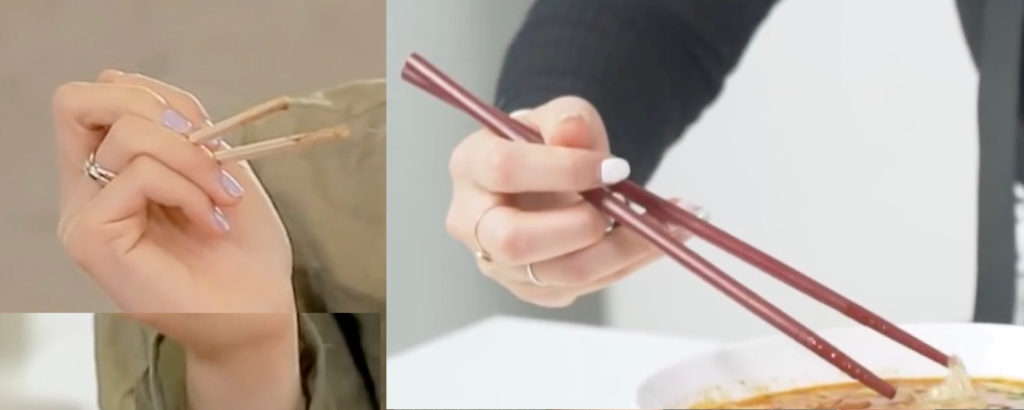
Following pictures show both of them clutching chopsticks shut.
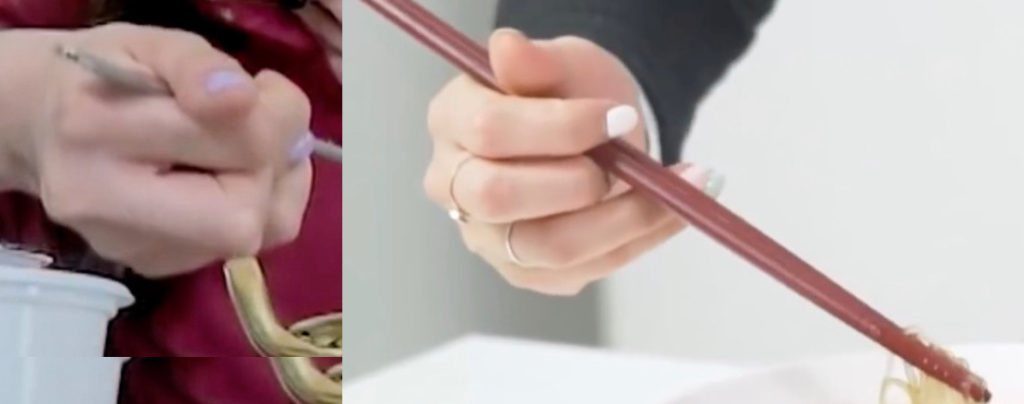
Compared to Chicken Claws and Idling Thumb
Following pictures compare the extension mechanism of Chicken Claws (on the left) to Double Hook (center), and to Idling Thumb (on the right). The index finger and middle finger configuration of Double Hook resembles that of Chicken Claws (left). But the thumb pose of Double Hook resembles that of Idling Thumb (right).
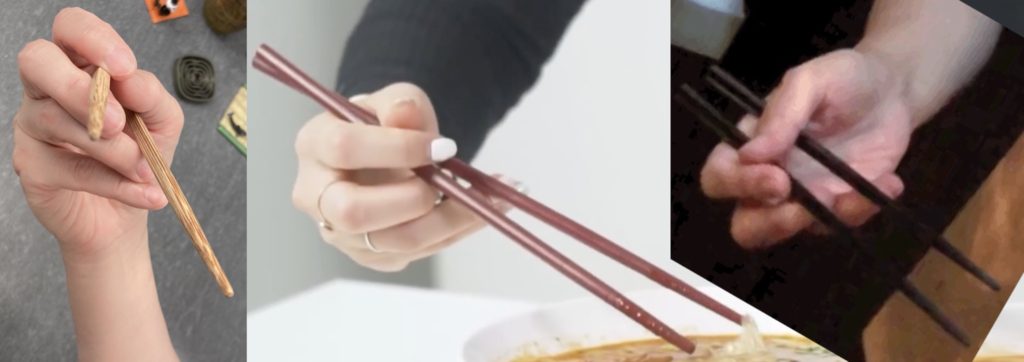
Following pictures compare the compression mechanism of Chicken Claws (on the left) to Double Hook (center), and to Idling Thumb (on the right). The primary difference is in where the thumb interacts with the top chopstick. In Chicken Claws (left) and Double Hook, the thumb base holds the top chopstick, and as a result, rear ends of chopsticks abut each other. In Idling Thumb (right), the thumb joint holds the top chopstick, thus giving rear ends enough distance from each other.
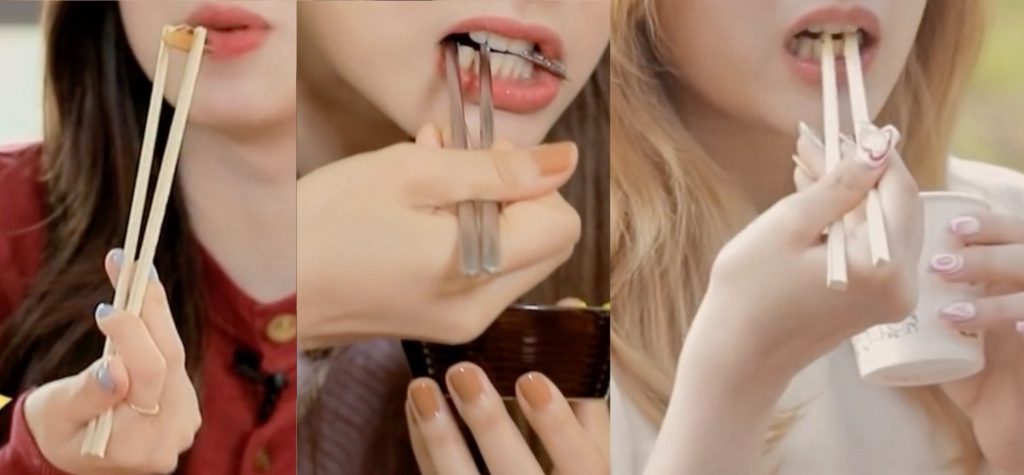
Dahyun’s Double Hook grip
In August 2021 we analyzed chopstick grips of all nine members of TWICE. Dahyun primarily wields Idling Thumb. But she seamlessly transitions from it to closely-related grips such as Chicken Claws and Double Hook as needed. Here is Dahyun wielding the Double Hook.
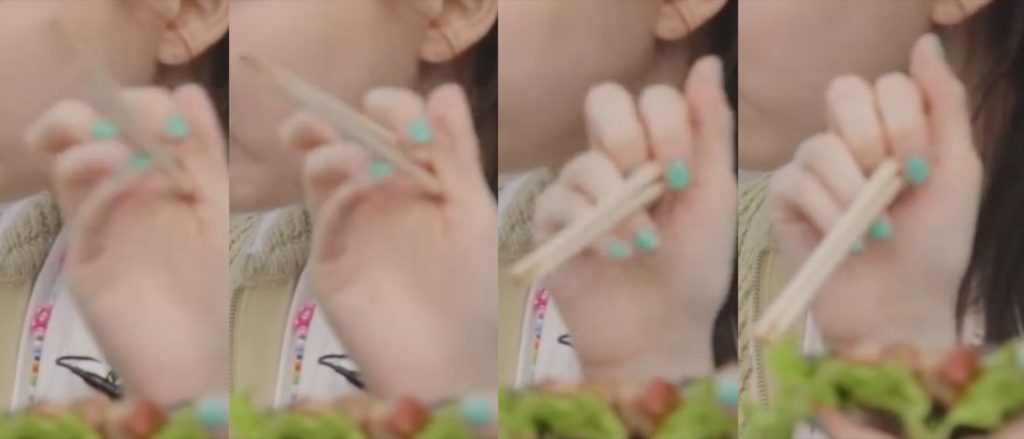
Like Jane from the WorldFriend article, Dahyun uses the knuckle of the middle finger to squash the top chopstick shut.
Jeongyeon’s Double Hook grip
Just like Dahyun, Jeongyeon occasionally transitions into Double Hook. The index finger curls around the thumb completely (below center, and below right). The middle finger, too, curls inward, and presents its knuckle to squash the top chopstick downward against the bottom chopstick (below right). Rear ends of chopsticks now abut each other (below right).
Tzuyu’s Double Hook grip
Tzuyu wields several related chopstick grips. One of them is Double Hook, as shown below.


Double Hook.5
Double Hook.5 is a “.5” variant of Double Hook. By “.5” variant we refer to a modified finger support for the bottom chopstick where both the ring finger and the pinky provide support, instead of a single ring finger support. We have now incorporated this “.5” factor into our Classification of Chopstick Grips.
Tzuyu singlehandedly provided us with the first examples of two theoretical “.5” variants: Double Hook.5 and Idling Thumb.5. Tzuyu just helped us confirm this theory that many grips have a “.5” variant. Here is Tzuyu wielding Double Hook.5.
Tzuyu switches between Idling Thumb.5 and Double Hook.5 at will. These two “.5” grips are related to one another, just like Idling Thumb and Double Hook are. In addition, Tzuyu also transitions between Double Hook.5 and Double Hook as needed.
Following pictures illustrate Tzuyu’s Double Hook.5 grip. These differ from the Idling Thumb.5 versions, in that at the open posture Double Hook.5 has rear ends of chopsticks squeezed together. Note how the bottom stick is supported by both the ring finger pad and the pinky knuckle – the hallmark of a “.5” variant.

Following pictures show Tzuyu dropping food off with her Double Hook.5 grip, starting with the compression posture (leftmost), and ending at the open posture (rightmost).

Following pictures illustrate the abutting posture of Tzuyu’s Double Hook.5 grip, where food items are small enough such that the two chopstick abut each other at the compression posture.

Sometimes the middle finger temporarily relieves the index finger, taking over its duty in keep the two chopsticks shut against each other. We’ve seen this often with everyone’s grip. People are not robots.

